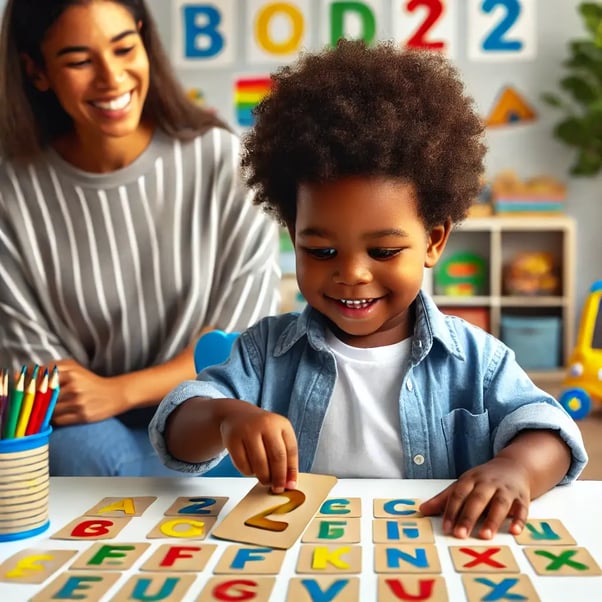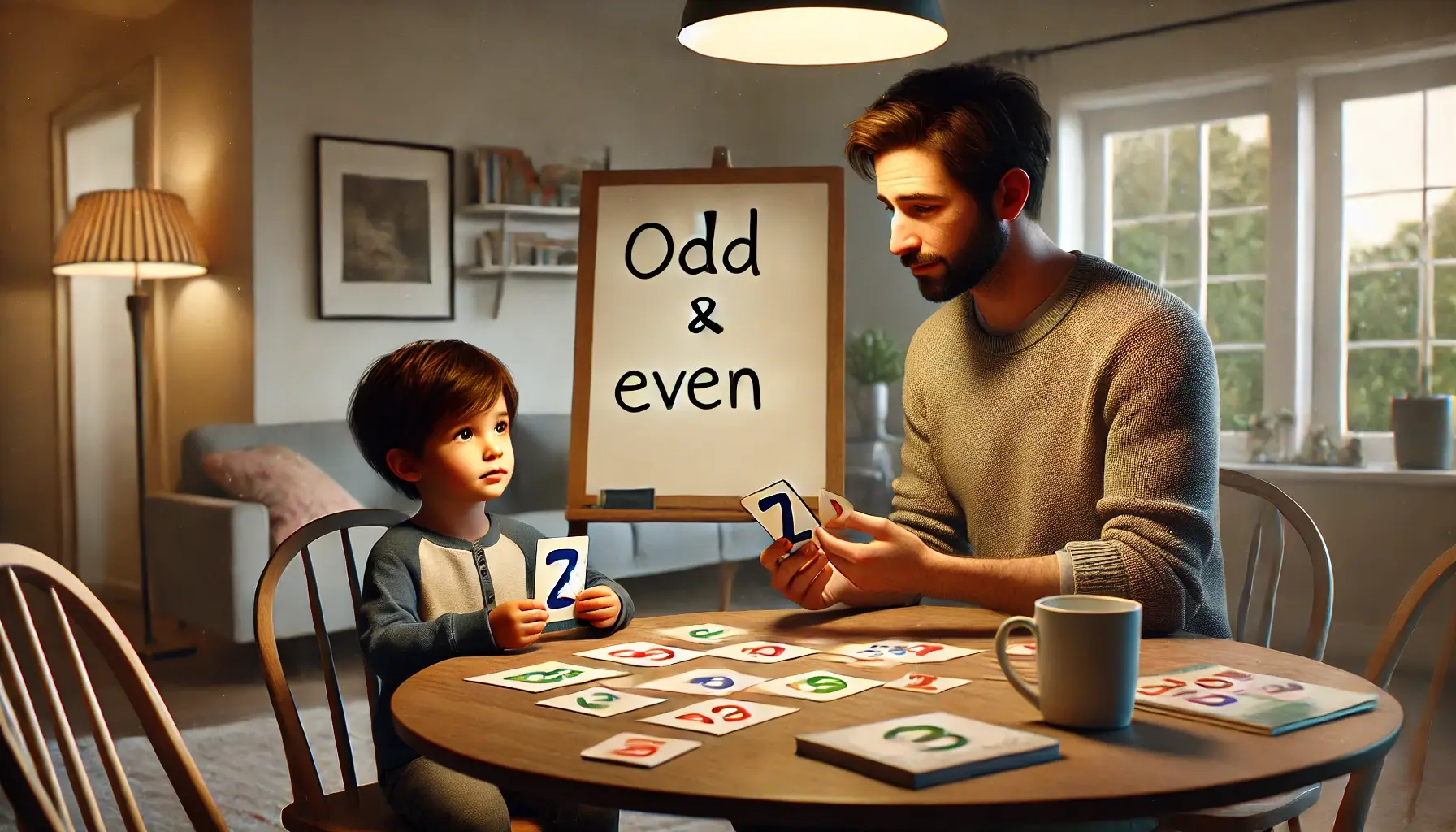
Think of your favorite book of all time—how it made you feel and why you love it. Now, consider your child’s journey to finding their favorite book. They can only reach that point once they've mastered the first fundamental step in early childhood: letter recognition. This skill is a crucial foundation for reading and writing. When children recognize letters, they gain the ability to decode and eventually develop reading fluency.
Letter recognition also lays the groundwork for the next step: phonemic awareness. Without it, your child cannot create words or sentences. Understanding that letter recognition is one of the most important skills for literacy success is essential. This article aims to be a helpful guide for parents and homeschoolers, offering strategies and fun activities to teach letter recognition at home.
Why is Learning the Alphabet Important for Early Literacy Development?
Learning the alphabet is crucial for early literacy development because it is the foundation for decoding skills. Once your child understands that each letter corresponds to specific sounds, they can begin decoding words. This ability not only enhances their decoding skills but also improves their spelling.
Each skill builds upon another: once your child can decode, they naturally start to spell and write by sounding out words. This leads to word recognition, enabling your child to read simple words and improve their reading fluency. As they begin reading simple words, their vocabulary expands, contributing to their journey toward becoming confident readers and writers. This is why it's so important to start teaching your child the alphabet early to enhance their literacy development.
When Are Kids Ready to Learn Letter Recognition?
During the critical developmental years of ages 3 to 5, children reach important milestones in letter recognition readiness. At age 3, children begin to recognize letters in their environment, such as on signs or in books. They often show interest in letter-based toys, like alphabet magnets or puzzles, and start recognizing the first letter of their name or identifying it in print.
By age 4, children hit more significant milestones. They experience increased letter recognition, becoming able to identify uppercase letters and recognize their own name. Sound association also begins, as they start connecting letters with the sounds they make, like "B" for "ball." Additionally, children may start writing some letters they've seen before.
At age 5, letter recognition typically expands further. Many children can distinguish between uppercase and lowercase letters and show good phonetic awareness, starting to blend sounds to form simple words. Word recognition improves as they create these simple words, and they begin to write, even if it's just their name.
It's important to note that this is not a perfect science—every child learns at their own pace, and that's completely normal! As a parent, look for signs of interest, whether in books or attempts at writing, and guide your child in developing these skills.
Letter Recognition Skills
There are four core skills that aid in letter recognition:
- Visual Perception: Recognizing the visual shape of a letter and identifying it correctly. For example, your child must recognize both "A" and "a" as the same letter and differentiate between similar letters like "B" and "D."
- Auditory Perception: Associating letter sounds with their visual representations. Connecting the sound "AH" with the letter "A" and "BUH" with "B" prepares your child for reading readiness.
- Visual-Motor Skills: Practicing tracing and writing letters not only improves handwriting but also reinforces letter shape recognition. Consistent practice is key!
- Memory: Strong memory skills enable your child to recall the names and shapes of letters, which is essential for faster recognition in text and building reading fluency.
Key Strategies for Teaching Letter Recognition
Introduce letters that are personally meaningful or frequently encountered, such as those in your child’s name. This approach helps children care more about learning letters, and recognizing the letters in their own name boosts their confidence, making the process more engaging.
1. Teach the Shapes of Letters and Provide LOTS of Practice:
Consistently teach both uppercase and lowercase letters. Repetition is key! Use alphabet magnets and puzzles to encourage practice and play. Incorporating games makes repetition fun and effective.
2. Read a Lot of Alphabet Books:
Expose your child to a variety of alphabet books by reading to them regularly. This helps familiarize them with letters, shapes, and sounds, fostering an early love for books and learning.
3. Include Multi-Sensory Alphabet Activities:
Activities that involve touch, sight, and sound can reinforce letter recognition. Try tracing letters in sand or singing phonics songs, which create strong associations between letters, their shapes, and sounds.
4. Teach Confusing Letters One at a Time:
Focus on one letter thoroughly before introducing a similar-looking letter to prevent confusion, especially with letters like "b" and "d."
How to Teach Letter Recognition: Essential Techniques
1. Letter Sequence:
Start with letters in your child’s name or those frequently found in children’s books. This approach makes letter recognition manageable and engaging, fostering a gradual learning process that’s more effective. Begin with simpler letters before moving on to more complex ones.
2. Letter Casing:
Teach both uppercase and lowercase letters together to provide a comprehensive understanding that letters can have two forms. This dual recognition is crucial for reading and writing.
3. Letter Matching and Sorting:
These activities help your child recognize similarities and differences between letters, reducing confusion and making letter recognition easier.
Simple Activities for Teaching Letter Recognition
- Read Alphabet Books: Regular reading of alphabet books reinforces letter recognition and helps your child learn sounds and shapes.
- Alphabet Cards: Flashcards provide quick, engaging practice sessions and capture your child's attention.
.png?width=701&height=394&name=Genie%20(2).png)
- Dot Letters: Tracing dotted letters builds writing skills and fine motor control, preparing your child for Kindergarten.
- Pencil and Paper: Encourage your child to write letters on plain paper to help develop fine motor skills and proper pencil grip.
Creative Letter Recognition Activities
- Daily Letter Recognition Practice: Incorporate letter practice into your daily routine through reading, focusing on letters in signs, or specific activities. Repetition is key.
- Rice/Sand Letter Match: Sensory activities like tracing letters in rice or sand allow visualization and practice in a fun way.
- Change the Medium: Experiment with materials like shaving cream, playdough, or finger paint to keep learning exciting.
- Fluency Grids: Create a letter grid game to develop speed and recognition skills by having your child quickly identify letters.
- Missing Letter Alphabet Practice: This fill-in-the-blank exercise reinforces letter order and ensures your child knows the alphabet in sequence.
- Interactive Notebooks: Use interactive notebooks for daily letter practice, including tracing, finding objects, and writing names. Create one yourself or purchase one for ongoing engagement.
Sound and Letter Association Activities
- Sound Matching: Incorporate phonetic awareness by matching letters to their sounds, setting the foundation for early reading success.
.png?width=701&height=394&name=Genie%20(3).png)
- Letter Sequence Order for Sounds: Start with consonant sounds and short vowels like "a," "o," "i," and letters like "m," "s," "t," "p." Avoid similar-sounding letters initially to build confidence.
Literacy Activities for Preschoolers
- Alphabet Songs and Rhymes: Catchy and educational alphabet songs and rhymes are excellent tools for memorizing letter names and sounds.
- Alphabet Scavenger Hunts: Create a hunt for letters in books or the environment to apply letter recognition skills dynamically.
- Name Recognition Games: Personalize learning with games centered around your child’s name, like name puzzles or letter hide-and-seek.
How Genie Academy Can Support Your Child’s Learning
At Genie Academy, we specialize in helping children master foundational skills like letter recognition, an essential part of reading and writing. Our expert tutors offer personalized instruction in small class sizes, ensuring that each child receives the attention they need. We provide tutoring not only in letter recognition but also in core subjects like math, reading, writing, and abacus to support comprehensive learning.
We have multiple locations across New Jersey, including East Brunswick, Hillsborough, Marlboro, South Brunswick, Plainsboro, and South Plainfield.
With both online and offline options, we make it easy for parents to choose what best suits their child’s needs. Whether building literacy skills or boosting confidence, Genie Academy is here to help your child succeed!
Conclusion
Teaching letter recognition is essential for your child's language development and future success. Incorporate a variety of engaging activities and strategies to keep your child motivated and enhance their engagement through visual, auditory, and kinesthetic senses. This approach aids in developing fine motor skills and lays a foundation for phonics.
Consistency in practice and diversity in activities are key to building a strong literacy foundation. Celebrate your child's small successes along the way. For extra support, consider reaching out to Genie Academy for additional resources to help your child thrive.





